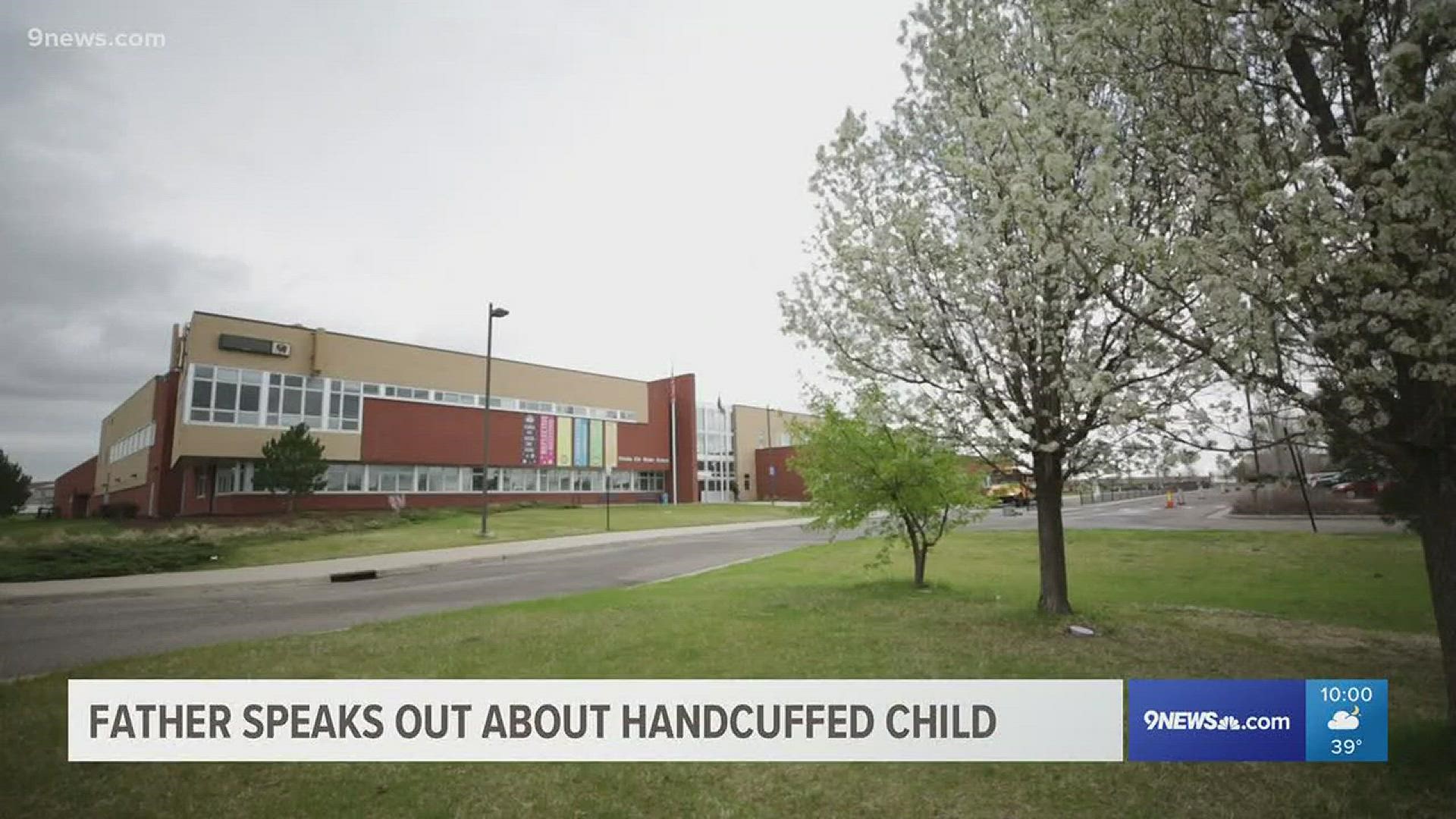DENVER — A report given to the Denver School Board shows 58 students have been handcuffed by Denver Public School (DPS) safety employees from 2017 to 2019.
9Wants to Know obtained part of the report through a records request. A full report to the board is still pending, according to Will Jones, director of media relations for Denver Public Schools.
The board asked for the report after a complaint surfaced on social media from a father who claimed his son was handcuffed at his elementary school earlier this month. Anna Alejo, chief communications officer for DPS, said she can’t discuss the case due to student privacy laws. Jones said neither the Board of Education nor the superintendent “have additional comment at this time.”
The issue came up during Monday’s Board of Education Work Session. School Board President Anne Rowe was alarmed by the prospect of mechanical restraints being used in schools.
“I have an incredibly difficult time imagining any scenario where any young person would be put in handcuffs,” Rowe said. “And I also struggle deeply with the impact on that young person in the trauma and the going forward thinking about their future.”
So far during the 2018 to 2019 school year, there were 27 instances of using handcuffs on students during 738 “child in crisis” calls and other calls to the Department of Safety, according to the report. From 2017 to 2018, there were 31 reports of handcuffed students during 832 “child in crisis” calls, the report says.
Julian Ford, a clinical psychologist and director of the Center for Trauma Recovery and Juvenile Justice, said that an instance of using physical restraints, like handcuffs, won’t change a child’s life forever. But he said it can trigger short-term problems long after the incident with sleep, learning, relationships and trust.
“Any child that experiences that physical restraint will have intense stress reaction and shift into survival mode,” Ford said in a phone call Thursday. “While one incident won’t change child’s life, even one incident can trigger prolonged stress reactions that can take years to recover from.”
Board Member Jennifer Bacon said during a work session on Monday that she wants the board to “keep accountability” of the school system.
“I don’t want to leave it up to social media,” she said.
DPS said 140 safety employees, including patrol officers and campus safety officers, monitor 93,000 students in the district. DPS provided data that showed these employees are mandated to have at least 24 hours of crisis intervention training in their first year on the job.
“We try to do this very sparingly and by following the guidance of these policies,” Denver Public Schools Superintendent Susana Cordova said during a working group session on Monday.
A review of the policy secured by 9Wants to Know outlines rules if a restraint is used. The student’s blood circulation and airway can’t be restricted. “Excess pressure” can’t be placed on their back. A student should be released from handcuffs within fifteen minutes “except when precluded for safety reasons.”
Cordova said restraints can be used by safety personnel “only in extremely rare scenarios.”
“Any time that we find that our actions don’t align with that vision of being a safe and welcoming environment that uses trauma-informed practices, it’s really important that we communicate very clearly and frequently both with students and families that might be impacted by this,” Cordova said on Monday. “That we gather facts. That we review what happens. And we determine if policy was followed and if, frankly, policy needs to be addressed.”
DPS Chief of Safety Mike Eaton said on Monday the use of handcuffs “really needs to be a last resort.”
If restraints are used, the force policy said the school is required to tell the parents no later than the end of the school day that the restraint was used according to the DPS policy obtained by 9Wants to Know.
A report that describes the incident, efforts to de-escalate the situation, alternatives attempted, any injuries that happened and other details surrounding the use of force has to be given to parents within five calendar days.
Eaton said if a parent complains excessive force was used, the force review board will review all documentation and conduct interviews to see if the response was appropriate.
“We want to make sure that restraints may never be used as a punitive form of discipline or threat," Eaton said. “We’re not threatening to put handcuffs on. We’re not threatening as a discipline tactic… As soon as that child is no longer a danger to themselves or others, those mechanical restraints come off.”
Ford, who is also a tenured professor of psychiatry at the University of Connecticut, said it’s important handcuffs are only used as a “last-ditch effort” and that staff members are taught how to de-escalate. An adult staying calm during intense stress encourages children to do the same because kids look to adults as role models.
This way, “ they can learn how to cope with stress reactions without losing control. It doesn’t solve the problem, but it’s part of the jigsaw puzzle,” Ford said in a phone call on Thursday.
No information has been made public about the incident that the DPS parent alleged on social media.
Have handcuffs or any other use of force been used on your child? We want to hear from you. E-mail Zack Newman at zack.newman@9news.com.
SUGGESTED VIDEOS | Investigations from 9Wants to Know

